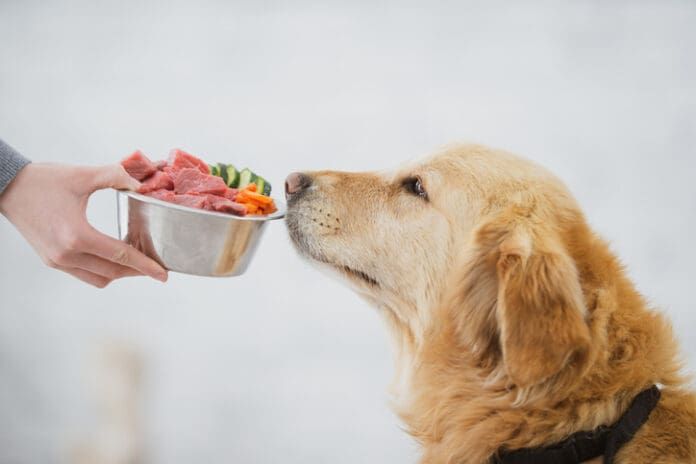Excerpted from Dog Food Logic, by Linda P. Case, M.S.
Like every person who picks up this book, I am a consumer. And like you, though loath to admit it, I am influenced by the advertising and marketing campaigns of products that interest me. Sometimes, despite myself (and especially during the Super Bowl), I am even affected by commercials for products that I have no interest in at all. Oddly, this seems to be most likely to occur if the Super Bowl commercial features a dog. And like many others, I am certain that I am not unduly influenced by the sea of marketing or advertising that surrounds us. When I am being courted, cajoled and wheeled by advertising gurus, I am highly conscious of this and so can still make my purchasing decisions in a clear and rational manner. Yeah, right.
Living in today’s world, it is inevitable that our choices are influenced by marketing tricks and ploys. This influence is especially insidious when it pertains to things that are important to us, such as our dogs’ health and welfare. We tell ourselves that we pay attention to ads and promotions for dog foods because we want to learn more about the nutrition and health benefits of the food and to determine if it meets the criteria that we determine to be essential for our dog’s activity level and life stage. And pet food companies make it easy for us because advertisements are, well, everywhere. While you may need to work a bit it find a book (such as this one) or nutrition research article or an article in a dog magazine, you don’t have to do anything at all except turn on your computer and open a browser to be inundated with advertisements for dog foods. Walking through your local pet supply store includes multiple display panels and sales campaigns promoting different (and new) brands and product lines. We read, we digest and we often act. And the action that pet food companies are bargaining on is a purchase of their products. Here’s an example (true confession time).
Mike and I currently live with four dogs and one cat. We have lived with and loved primarily Golden Retrievers since we were in our early 20s. Several years ago we began to expand our horizons a bit. We added Vinny, our beloved and quirky Brittany to our family. Following him, Chip, our gentle, funny and rather loud Toller (if you know Tollers you are certainly familiar with their “voice”) joined the Case clan. Chip has been a true ambassador for the breed both at our training school and within our community. He is a gentle and sweet soul who loves to swim, run, train and has excelled at learning all sorts of silly tricks. He is the first dog that I trained to ride a skateboard, something that he actively seeks to do whenever we walk into our training building. Suffice it to say that we adore Chippy and have loved learning about the Toller breed through him and his breeder, Dan Rode, who has become a good friend. Because Tollers are also still relatively unknown, and because we are identified in town as the training school couple who “has Goldens,” people in our community naturally assume that Chip is either a Golden or a Golden mix. Responding (again) to their queries with “No, he is a Nova Scotia Duck Tolling Retriever,” often leads to facial expressions that suggest we are pulling some dog-related joke on them, since a breed with such a funny name cannot possibly exist.
Against this backdrop, consider our delight during a weekend grocery shopping trip when we entered the dog food aisle to see that trademark happy smile, gold face and white blaze – a Toller on the front of the popular dog biscuit box! Holey Bat Cave, Batman, the Toller has make it to the big leagues! We were of course thrilled that others too could now enjoy the smiling happy face of a Toller and perhaps learn about this wonderful breed. We were also all happy to purchase a box ourselves. Never mind that we never feed that brand of biscuit or that we pride ourselves on purchasing all of our dog products at a locally owned pet supply store. We capitulated without even the semblance of a cognitive struggle. And, for the next six-month period or so that the box continued to carry this beautiful dog on its cover, we continued to look for it during every shopping trip, as well as to purchase the occasional box. Until, that is, they switched the photograph to a picture of a Chinese Crested. The first time that we noticed the breed on the box had been changed I thought, “Now, for goodness sake, where is the Toller, and who in the world will buy that box?”
Who’s the customer?
The presence in my kitchen cupboard of multiple boxes of dog biscuits, all displaying a smiling Toller on the front panel, bear testimony to the fact it is the owner, not the dog, who is targeted by pet food company marketing campaigns. But then, we all know this, right? Sure we do. Years ago, when marketing psychology was still in its infancy, pet food companies clearly directed their message to dog owners through two very simple messages. These were “your dog will love this food” and its natural extension “your dog will love you for giving him this food.” I remember watching Gravy Train commercials as a kid in which the family dog happily, if not a bit maniacally, chases a miniature [gravy] train into the kitchen where Johnny and Mommy are dishing out a can of the goopy stuff. Rover dives in, Johnny smiles, Mom pats Johnny on the head and everyone is happy. This approach worked well for a long time and continues to be a cornerstone of many dog food advertising campaigns today. We all want to feed a food that our dogs relish and enjoy. Additionally, as we saw in Chapter 1, the love and caretaking that is part and parcel of feeding our dogs is a cherished daily ritual that we share with our dogs.
Need help choosing a food for your dog? Want assistance wading through the ads, labels, hype and information bombarding you every day? Learn what matters most by reading Dog Food Logic. Buy it today from Whole Dog Journal.






